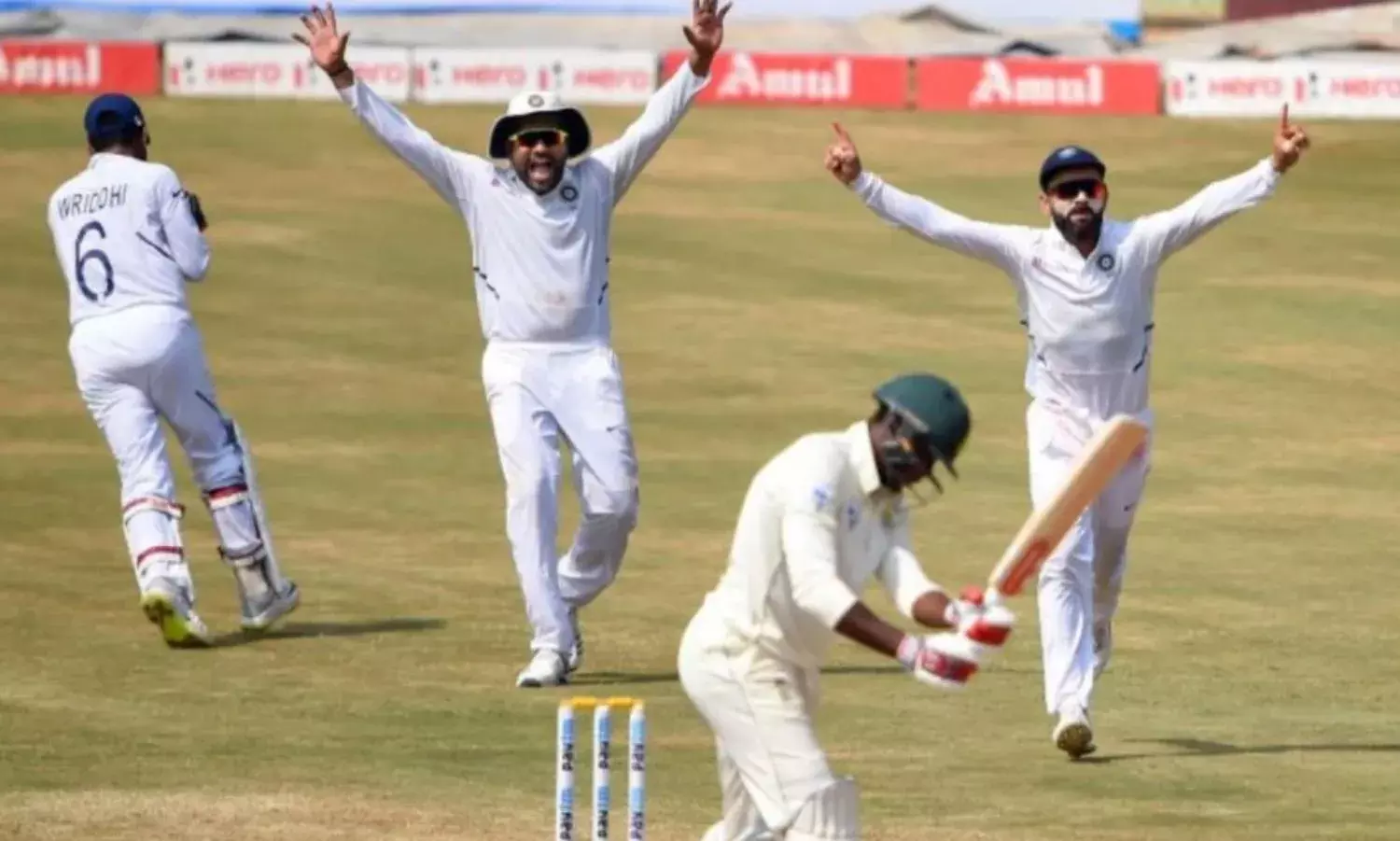Difficult for South Africa to Come Back
Difficult for South Africa to Come Back

South African captain Faf du Plessis has spoken of the need to learn from their mistakes and try and get better following the 203-run defeat in the first Test against India. While there is no doubt that the visitors will try their best to turn things around in the two remaining Tests at Pune and Ranchi it may not be easy.
For one thing India is virtually impossible to beat at home. Secondly there is a vast difference between the team personnel. While the South African team has some world class players the home team has several. This is confirmed by the ICC player rankings. And speaking of rankings India are perched on the top while South Africa are at No 3. Also given that the surfaces for the remaining two Tests at Pune and Ranchi are not likely to be different it is difficult to see any change in the scenario.
Moreover South Africa notched up the last of their five Test victories in India in February 2010. Among all countries that they have played in since coming back to Test cricket in 1992 they have one of their worst records in India having lost eight and drawn three before embarking on their current tour.
South Africa has some inherent weaknesses in both batting and bowling and this was exposed during the first Test. The batting is susceptible against spin while the bowling is overdependent on pace. At Vizag the South Africans tried to play catch-up with the home team by including three spinners and omitting Lungi Ngidi. It was always on the cards that the move would backfire as their spin trio lacked the class, skill and experience of the Indian spin duo. The fact that Keshav Maharaj conceded 318 runs for his five wickets and Dane Peidt’s solitary wicket cost him 209 runs only drives home this point.
The South African pace attack is deadly on their more responsive surfaces back home but on Indian pitches their wings are clipped which means that the bowling will make little impact on the strong Indian batting line-up. The fact that they took only eleven wickets while conceding 825 runs is the ultimate proof of this. All the same the visitors will do well to include Lungi Ngidi in place of Peidt for the second Test. Three pace bowlers will always be the better option for South Africa than three spinners. They can also consider strengthening the batting for they have part time bowlers in a couple of batsmen
Except for a brief spell on the third day when Dean Elgar, du Plessis and Quinton de Kock played the rescue act India always looked like winning the match. The home team can take credit for a thoroughly professional performance. The batting and bowling shone in unison and unlike the previous encounter four years ago when Ravi Ashwin and Ravindra Jadeja wrought havoc this time Shami came up with an inspired display in the second innings. However there is no denying the fact that it was spin that again played a major role and Ashwin in particular was outstanding. Let there be no doubt whatsoever that he is India’s No 1 spin bowler and if one goes by the cricketing adage that a spinner continues to improve in his mid 30s then the 33-year-old Chennai born off spinner is all set to crack more records in the future.
But the most heartening aspect of the victory was the batting of the openers. Coming into the game under tremendous pressure Rohit Sharma delivered in style joining the ranks of only five other Indians with a century in each innings of a Test. Perhaps even more encouraging was the double century by Mayank Agarwal. There was never any doubt as to the capabilities of the middle order and the only question mark remained over the opening slots. With that being answered in the most emphatic manner Indian batting could touch even greater heights in future.



